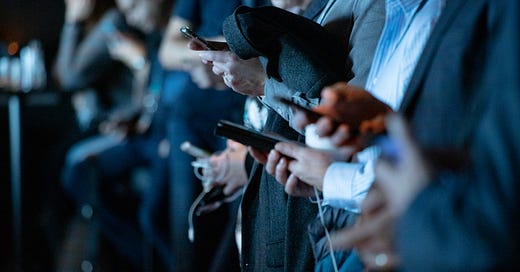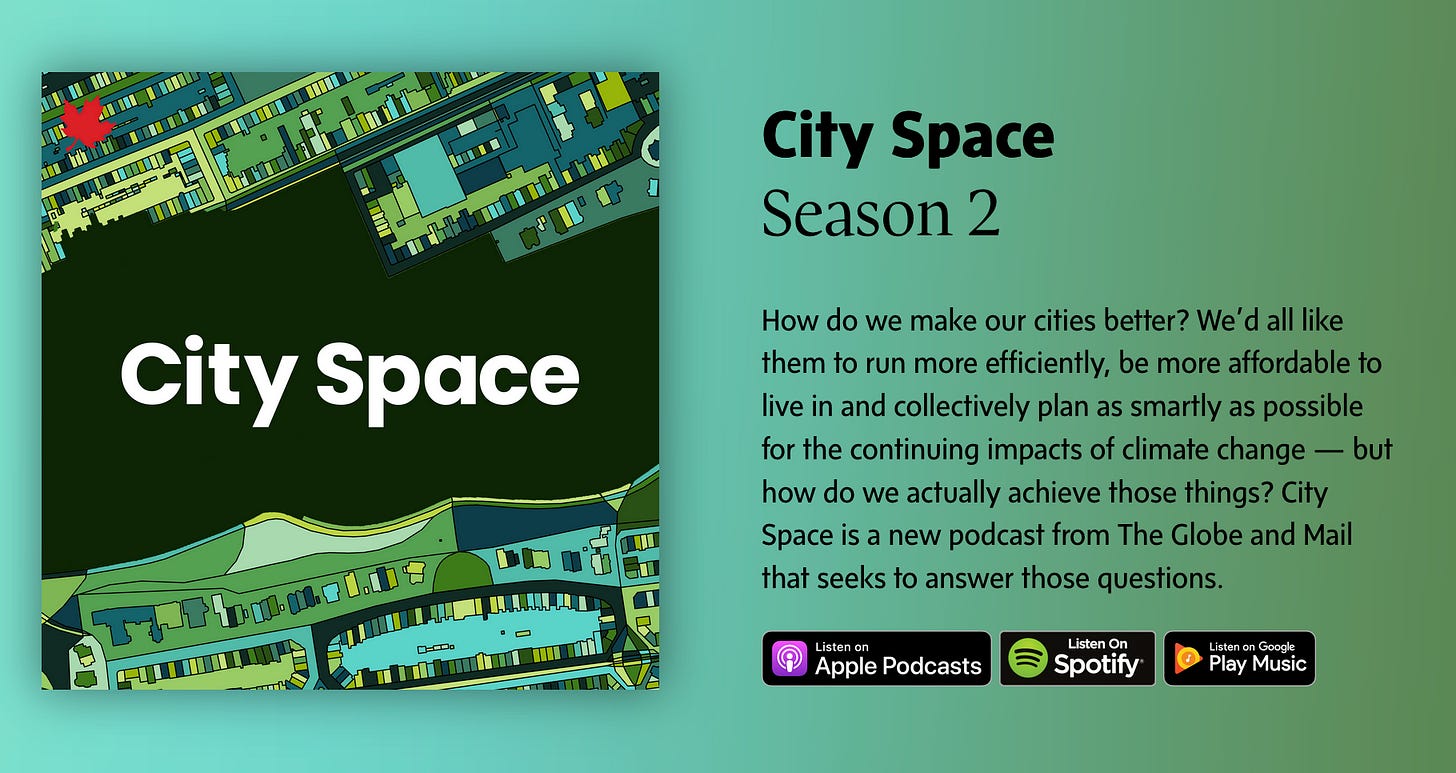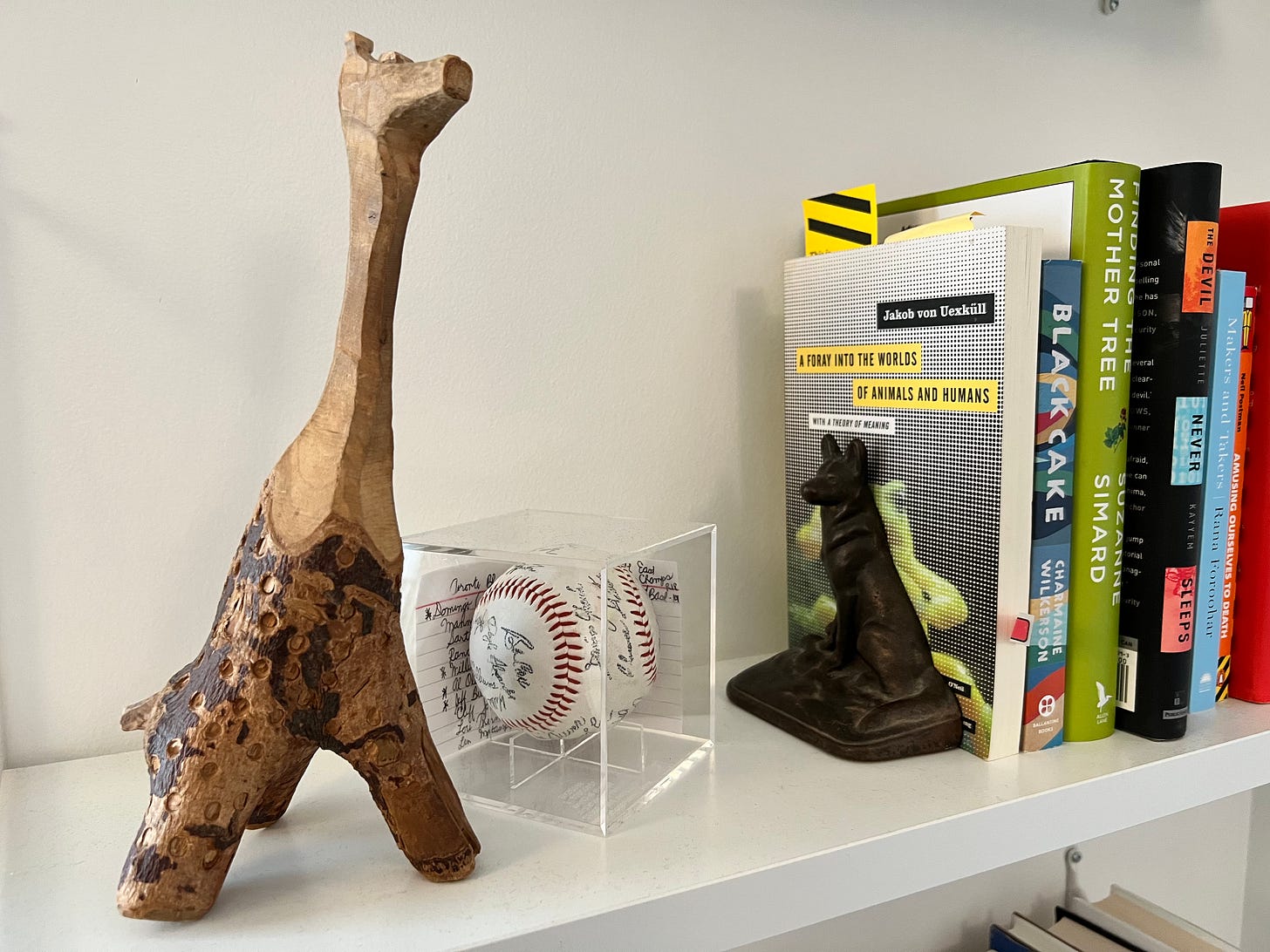15-Minute Communities, Technology, and Social Trust
How the world we build for ourselves can also trap us, and one suggestion for how to fix that.
Messages from the fever dreams of internet conspiracy-land.
Over the past couple of weeks I have received, out of the blue, several emails denouncing a simple, innocuous urban planning concept known as the 15-minute community.
Somehow this approach to planning, which argues people should be able to access basic amenities, such as food and clothing, within a fifteen minute walk, has become a target for conspiracy theorists.
It is not my intention to pursue these claims here. They are far fetched and, to be blunt, dumb.
There was one message, though, that made me think the writer was interested in dialogue.
So, I replied.
What transpired, and the, in retrospect predictable, way it ended got me thinking about how we communicate with each other, the technology that underpins that communication, and how that technology shapes who we are, both individually and as a society.
Our conversation went something like this: I responded to her email, which contained a number of factual inaccuracies, correcting them and providing sources backing up my claims.
She replied with a link to a far right conspiracy site. (This site also happens to spread false information on vaccines, COVID, and a number of other favourite topics of conspiracy theorists). She ended the email by saying that I needed to do my research.
Well.
It happens that my job is doing precisely that, and I take a fair bit of pride in doing it well.
I responded, noting that good research entails gathering a number of sources, analyzing the veracity of the claims they make, checking the data and considering the reasoning, and then arriving at a conclusion that accurately reflects these results.
To reinforce this, and maybe even be helpful, I included a link to search results for the terms she was making claims about, pointing out that it showed a number of sources addressing them, almost all of which, except for the one link she provided, argued against the position she was taking. (I also provided her the link to SCGC’s page on 15-minute communities in case she wanted to learn more.)
And with that I arrived at the end result, which was a one-line reply stating that she would continue to oppose 15-minute communities.
Ultimately, the effort this person went through had nothing to do with learning or enhancing her understanding. It was performative outrage, a small hit of righteous dopamine. I could have provided her with rock solid evidence and reasoning and, I’m fairly certain now, it would not have made one whit (or wit in this case) of difference.
The black and whiteness of this person’s stance, the unwillingness to entertain other possibilities this response exemplifies, is, it seems to me, a characteristic that seems to be spreading in our society.
So many of us seem to be living in our own small worlds, isolated on islands comprised of favourites picked from here and there, each chosen to reinforce biases, feed predilections, minimize and distance fears…
Remaining connected with the world, on the other hand, requires a flexibility in thinking, an acceptance that things may not always be as you want them to be, that you are most likely wrong on a number of things and that there are others who might know more about some things than you do.
In his wonderful and important book, “The Constitution of Knowledge”, Jonathan Rauch underlines how the quality of intellectual humility, a sense of fallibility, of the possibility that we might be wrong, or that someone else might be right, is crucial to, what he calls, the “reality based community” .
A quick skate across any social media feed, a slippery surface with very little depth, provides abundant evidence that this sense of humility is, by and large, missing from our collective discourse. Flip from one reel to the next and the next, and so on ad infinitum, and just about all you get is individual preening, instructions on how you should do this or be that. It’s the technological equivalent of Narcissus at the pool.
Social media is a particularly acute example of this dynamic, and there are good reasons for this. It’s easy for just about anyone to access. There are few checks and balances on what can be said, leading to little in the way of fact checking and accuracy.
The milieu this creates is one in which a person can easily assert and maintain just about anything, no matter how fictional or untethered from reality, and yet simultaneously, they can be suspicious of everything else that is said. This is especially true of that which might contradict their own biases and beliefs.
What results, then, is a world that perfectly suits our own desires, but also a world fraught with tension, underlined by stress and fractures, a brittleness in the make or break of our relations with others – either they agree with you or don’t agree with you, there’s no in-between.
Social media is just one of the most obvious examples of this dynamic. Our cultural habits display this self-centeredness as well. Food, for example, is produced to appease our taste buds, targeting high reward hit points like salt, sugar, fat; dietary concerns come a distance second. One can look at any number of other examples that confirm our biases and feed our wants.
Perhaps this isn’t surprising. What else should technology do? Of course it makes sense that we use it to create a comfortable cocoon for ourselves, a home furnished with the things that make us happy. But the more we are able to create a world for ourselves, the more it’s bent to be what we want, the more we push away that (larger) part which is different, that part that establishes itself on its own terms.1
There’s a fascinating distinction articulated by the philosopher Heidegger between technology in an original sense and as it is practice in modernity. The old way of technology (techné) resulted in a “bringing forth”, it was a process of working with life and the world around us. That which establishes itself on its own terms, in other words, was met, and the meeting between the two unique qualities brought into the world something that was both new and also retained what was old. There was a through-line in time, what Walter Benjamin, another great philosopher, called the “aura”.
Modern technology, on the other hand, doesn't bring forth so much as it “sets upon”. It breaks apart the through-line by demanding that the Other, or that which had established itself on its own terms, conform to be what is wanted of it.
I have a personal example of bringing forth. My father was a woodworker for a time, and this giraffe he made for me when I was a toddler, cut from a branch, shows how he worked with or met the form that was already there.
Woodworkers, at least those of a certain ilk, will tell you that the wood speaks to them. One of the finest, James Krenov, wrote of how his planks would make noise as they slowly dried in his shop, some taking years before indicating they were ready to work with him.
What we’ve lost, I think, and this is reflected in the outcome, or lack thereof, of the email back and forth on 15-minute communities, is the understanding that for technology to be lasting, it needs to work with life rather than against it. The giraffe my father made is extremely strong because it follows the grain of the branch.
We can use technology in this way again, to bring us together while also highlighting what makes us each unique. Ironically this is exactly what 15-minute communities can achieve, by establishing space for residents to meet each other in more informal ways, outside of their cars, away from their computers, and instead on their way to get a coffee, make a purchase at their local grocery store, or simply sit for a while on a bench.
With respect to land-use planning, at least, and 15-minute communities, this principle, of enabling possibilities, of creating spaces that don’t force needs or requirements upon people, rather enabling opportunities for new and emergent outcomes, can build bridges between self-centred islands I mentioned above, helping us to meet each other in a more real way than that which happens when our options are limited.
When it comes to digital technology, well, that’s a bit of a different nut to crack. It is, by definition, a black and white thing, bits and bytes, ones and zeros. We make the mistake of thinking that it is more like the real world than it is, that it functions the same as technology that we, as a species, are far more accustomed to – the plants, the seasons, the planks of wood stacked in the corner of the shop I alluded to earlier.2
Amidst the soaring mental health crises in youth, the mis and disinformation rampant amongst adults and the splintering of social trust, I’d suggest these spaces are more important than ever. They are meant to bring us out of our own small worlds and into worlds where we meet others, where we are shifted from our comfort zones and so build the social muscle of establishing new comfort zones and, ultimately, are able to comfortably entertain uncomfortable zones.
Here’s hoping 15-minute communities become the norm.
If you are a student of Greek mythology you may be sensing in this a Promethean rift from the Gods, as it were, wherein humanity casts off its shackles. Prometheus, legend says, gave us fire, but is punished for doing so by Zeus, who, in the form of an eagle, visits him every day and eats out his liver. The ancient Greeks saw the liver as the organ that enabled emotion, and so the feeling of life – emotion – is taken from Prometheus, regrown overnight, and then taken again, day in and day out – a sense of loss, in its utmost, re-experienced, lost, re-experienced, forever.
For more on the differences here read technological theorists like Herbert Marcuse and Canada’s own Ursula Franklin.








